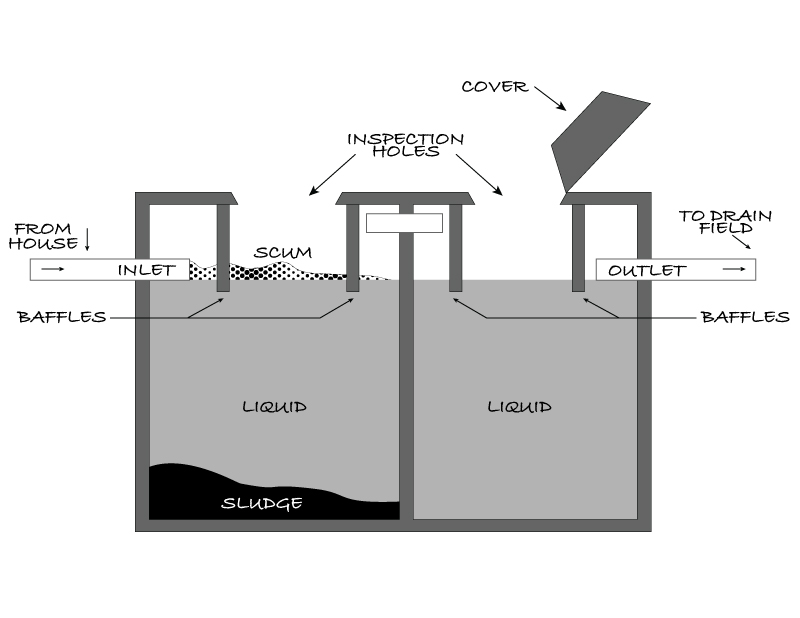How Does a Septic System Work?
A typical septic system will consist of two major parts:
- A septic tank
- A leaching bed area
Properly constructed septic tanks have two chambers. They are usually constructed of concrete, steel, fiberglass or polyethylene. They’re watertight, buried underground, and the tank is sealed off from oxygen. Wastewater from the septic tank then flows to the leaching bed area through a distribution box or header line. The leaching beds consist of underground perforated pipes or clay tiles which evenly distribute wastewater over natural soil or imported fill.
What is The Purpose of a Septic System?
A septic tank separates solids from liquids in wastewater and begins the process of breaking down contaminants. Solids settle at the bottom of the septic tank and scum floats to the top. The purpose of the leaching bed is to continue treating the wastewater. In this process, the bacteria requiring oxygen digest and remove impurities such as suspended solids, organic chemicals, viruses and/or bacteria. The leaching bed disposes of the filtered wastewater into the natural soil and, eventually into the groundwater.

